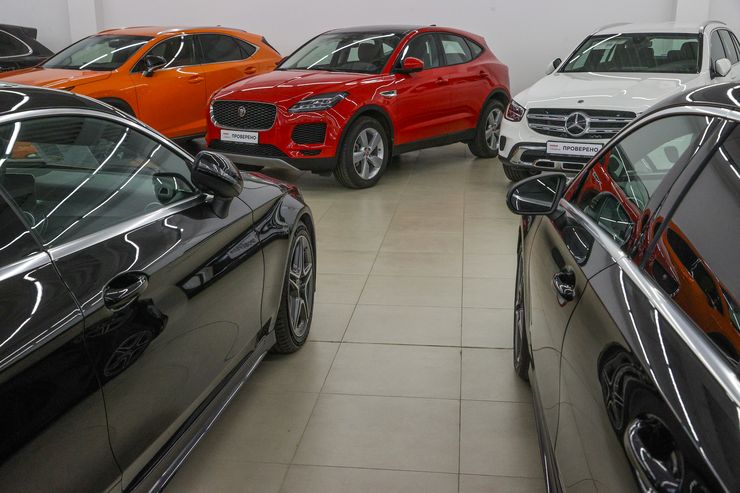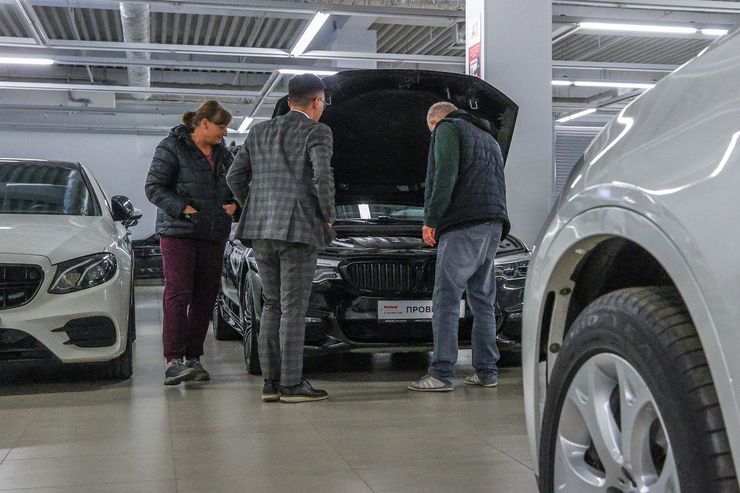Half-life: how long a modern car can actually last
- December 27, 2022
- 0
When does a car lose its new status and how many years does a car owner actually have to pay off a loan or build up cash for
When does a car lose its new status and how many years does a car owner actually have to pay off a loan or build up cash for

The fierce cocktail of politics and economics, into which car manufacturers have plunged headlong, has made the modern car a misunderstanding. Mercedes-Benz, which produced more than a million engines not so long ago, proudly reports an internal combustion engine stock of 140,000 km. The thickness of the “Japanese” paint layer, which theoretically protects iron from rust, no longer retains water. All workshops are filled with Korean crossovers. In addition, some “products” of the super tandem from the Land of Morning Silence are not even handed in: after 30,000 km you don’t have to look into the cylinders – there are already plagues that guarantee a shot. Jokes about Jaguar and Land Rover can’t even be remembered.
That’s called surviving. It has gotten to the point where a used car from the 2000s will last longer than a more modern car of the same model. As an example – Honda Accord of the seventh and subsequent generations. Who’s on the road more?
The “wrong turn” happened in the late 2010s and early 2020s, when arithmetic beat not only statistics, but image braggadocios. By balancing revenue against expenses, auto companies around the world have realized that servicing and repairing used cars brings in far less money than selling new ones. The business plan was quickly put on the table.
Automakers have realized that by multiplying the amount of new cars by forcing anything and everything to exorbitant indicators, you can force the car owner to change cars more often. And “ecology” – to tighten the nuts even more. The result is obvious: today the car with great difficulty survives the life of the first owner, and the second begins with numerous repairs. “Gelendvagens” of the early 2000s, sometimes having as many as 15 owners, laugh out loud on the sidelines.
Hiding behind atmospheric emissions and reduced fuel consumption – the same editorial Mitsubishi Lancer of the beginning of the century in the city burns 10 liters and does not sneeze, although today this is a monstrous amount – the engines began to “choke” in the literal and figurative sense . If you want to save money, take it, but a coin always has two sides.
You have to pay for everything: by increasing the compression ratio and at the same time reducing the weight of the internal combustion engine, the engine power has decreased several times. Add here any EGR, exhaust afterburning, catalytic converters and other things, and we get a very deplorable result – a budget car is already approaching a constructive death in the fourth year of operation. Initially expensive – after 7-8 years. About “necropremium” – Range Rover for 700, GL and Cayenne for a million – probably everyone has heard, and therefore we will not repeat ourselves.
Connoisseurs argue that the Japanese had and probably still adhere to the following principle: there is an accurately calculated mileage of the car, “recorded” by engineers at the factory, in which it no longer makes sense to repair it. With seven seals, this is of course a secret, but in practice it looks like this: up to 150,000 km on the clock, the owner is exclusively concerned with maintenance. Then the replacement of various sensors and assemblies begins, and with a circulation of 300,000 important elements are dropped – the body, engine, gearbox.
It is clear that this calculation is approximate with an error in the operating mode and the gasket between the steering wheel and the seat, but the general vector is clear. When buying a used car with a mileage of 300,000 km, you should not expect miracles. Especially if this run has already been twisted several times.


The fierce cocktail of politics and economics, into which car manufacturers have plunged headlong, has made the modern car a misunderstanding. Mercedes-Benz, which produced more than a million engines not so long ago, proudly reports an internal combustion engine stock of 140,000 km. The thickness of the “Japanese” paint layer, which theoretically protects iron from rust, no longer retains water. All workshops are filled with Korean crossovers. Moreover, some “products” of the super tandem from the Land of the Morning Silence are not even traded: after 30,000 km you do not need to look into the cylinders – there are already pests that guarantee a shot. Jokes about Jaguar and Land Rover can’t even be remembered.
That’s called surviving. It has gotten to the point where a used car from the 2000s will last longer than a more modern car of the same model. As an example – Honda Accord of the seventh and subsequent generations. Who’s on the road more?
The “wrong turn” happened in the late 2010s and early 2020s, when arithmetic beat not only statistics, but image braggadocios. By balancing revenue against expenses, auto companies around the world have realized that servicing and repairing used cars brings in far less money than selling new ones. The business plan was quickly put on the table.
Automakers have realized that by multiplying the amount of new cars by forcing anything and everything to exorbitant indicators, you can force the car owner to change cars more often. And “ecology” – to tighten the nuts even more. The result is obvious: today the car with great difficulty survives the life of the first owner, and the second begins with numerous repairs. “Gelendvagens” of the early 2000s, sometimes having as many as 15 owners, laugh out loud on the sidelines.
Hiding behind atmospheric emissions and reduced fuel consumption – the same editorial Mitsubishi Lancer of the beginning of the century in the city burns 10 liters and does not sneeze, although today this is a monstrous amount – the engines began to “choke” in the literal and figurative sense . If you want to save money, take it, but a coin always has two sides.
You have to pay for everything: by increasing the compression ratio and at the same time reducing the weight of the internal combustion engine, the engine power has decreased several times. Add here any EGR, exhaust afterburning, catalytic converters and other things, and we get a very deplorable result – a budget car is already approaching a constructive death in the fourth year of operation. Initially expensive – after 7-8 years. About “necropremium” – Range Rover for 700, GL and Cayenne for a million – probably everyone has heard, and therefore we will not repeat ourselves.
Connoisseurs argue that the Japanese had and probably still adhere to the following principle: there is an accurately calculated mileage of the car, “recorded” by engineers at the factory, in which it no longer makes sense to repair it. With seven seals, this is of course a secret, but in practice it looks like this: up to 150,000 km on the clock, the owner is exclusively concerned with maintenance. Then the replacement of various sensors and assemblies begins, and with a circulation of 300,000 important elements are dropped – the body, engine, gearbox.
It is clear that this calculation is approximate with an error in the operating mode and the gasket between the steering wheel and the seat, but the general vector is clear. When buying a used car with a mileage of 300,000 km, you should not expect miracles. Especially if this run has already been twisted several times.
Source: Avto Vzglyad
Donald Salinas is an experienced automobile journalist and writer for Div Bracket. He brings his readers the latest news and developments from the world of automobiles, offering a unique and knowledgeable perspective on the latest trends and innovations in the automotive industry.